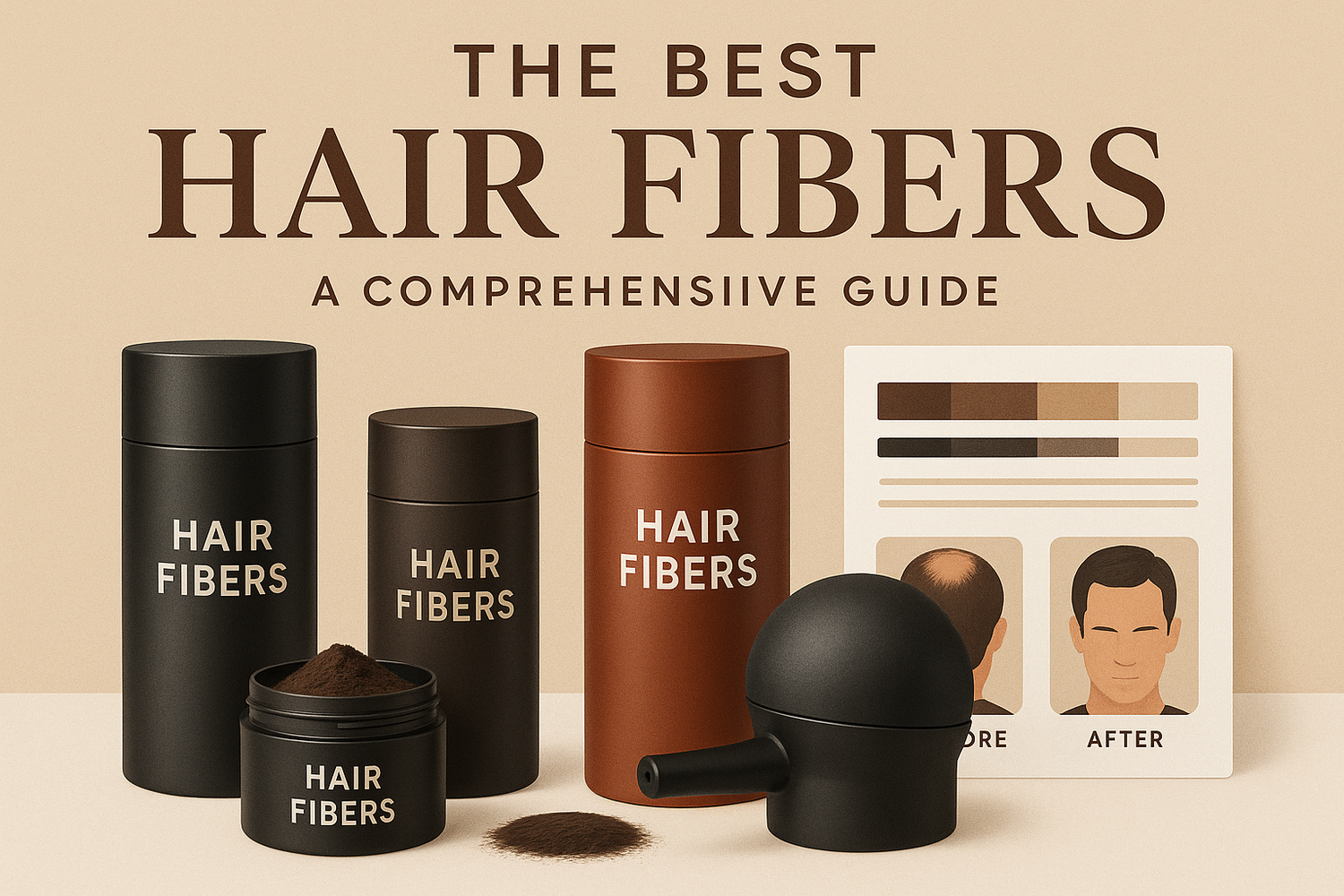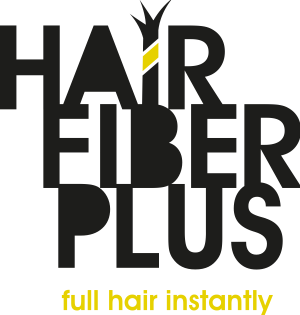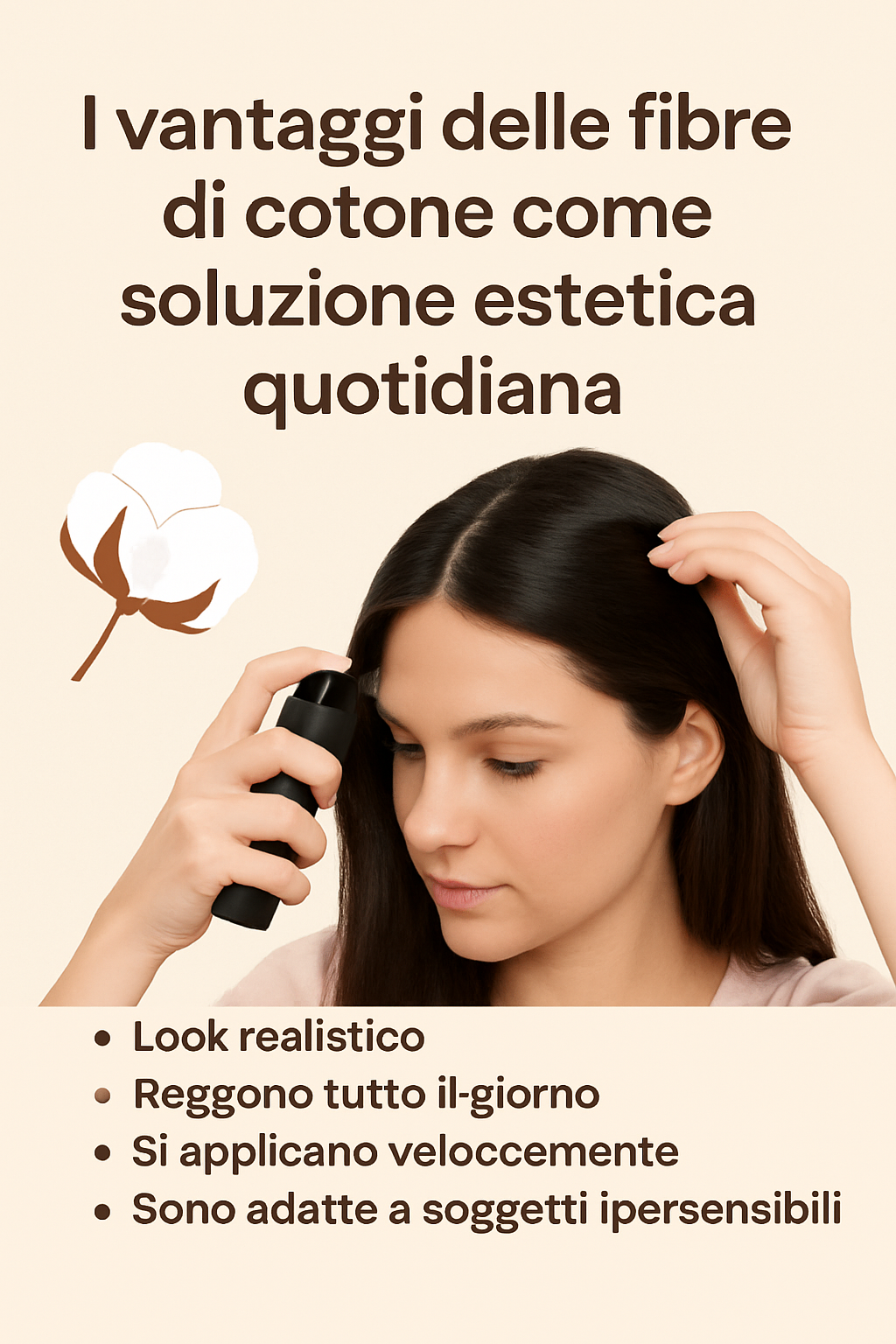Know everything about the best hair fibers and find the solution best suited to your needs and hair type.
Hair fibers stand out as one of the most advanced cosmetic solutions for masking thinning and enhancing the aesthetic value of the hair. Through advances in trichology and cosmetology, these products have reached high-quality levels that can guarantee natural results, durability, and adaptability to different hair types. The growing interest in the best hair fibers concerns not only those suffering from androgenetic alopecia or telogen effluvium but also those who want to temporarily improve the appearance of their hair without resorting to pharmaceutical or surgical treatments.
What hair fibers are and what they are used for
Hair fibers are colored microstructures designed to adhere to the hair shaft and create the optical illusion of greater density. These microparticles can come from cotton fibers, plant-based materials, or synthetic polymers and are treated with specific processes that enhance their ability to electrostatically bind to the remaining hair. The effectiveness of these products is based on the principle of optical camouflage: where the hair is thin or sparse, applying the fibers fills the gaps and restores chromatic and volumetric uniformity to the hair.
Their use meets different needs. What does this mean? On one hand, there is the immediate aesthetic function, particularly important for those needing an image improvement in professional or social contexts. On the other hand, the fibers provide valid psychological support, as they help mitigate the emotional impact often accompanying thinning.
How they work aesthetically
The aesthetic function of hair fibers is based on the mechanism of electrostatic attraction. Once applied to the scalp, the positively charged particles bind to the remaining hair, which naturally carries negative charges. This bond creates an apparent thickening of the hair and a uniform filling effect that effectively masks the sparsest areas.
The result is amplified by the fibers' ability to reflect light similarly to natural hair, minimizing the artificial effect. The quality of the source material significantly influences the achievable realism: cotton fibers, in particular, offer greater resistance to water and sweat, while keratin fibers (being made of the same structural protein as human hair) can fully integrate with the scalp.
The different types of hair fibers on the market
The market offers a wide range of hair fibers, differentiated by the raw material used, production technology, and application method.
Choosing the most suitable type cannot ignore a technical evaluation of each product's intrinsic characteristics.
Keratin fibers
Keratin fibers are universally considered the best hair fibers in terms of aesthetic performance. Keratin is the main protein that makes up the hair structure, and this compositional similarity allows optimal integration, hardly distinguishable to the external observer. They undergo micronization and pigmentation processes to faithfully reproduce shades and textures similar to natural hair.
Cotton fibers
Natural cotton-based hair fibers are a valid alternative for those who prefer plant-based solutions. Cotton, being lightweight, allows for a soft and less occlusive filling effect, ideal for those with sensitive scalps.
They are particularly appreciated for their ability to adhere stably to the hair shaft, especially when combined with specific fixing sprays that prolong their durability even in unfavorable environmental conditions.
Synthetic fibers
Synthetic fibers are made from polymers technically designed to resist critical environmental factors such as sweat and rain. Although offering a less natural aesthetic effect than keratin fibers, these solutions guarantee greater durability and are particularly suitable for those needing prolonged performance throughout the day.
Spray fibers
Spray fibers are an interesting technological evolution. The aerosol delivery method allows for uniform and precise distribution, reducing the risk of buildup and improving aesthetic performance over larger areas. This type is particularly suitable for treating the vertex and areas of diffuse thinning. Some spray products are formulated in various ways, for example, the dark solution for extensive thinning, designed to ensure homogeneous coverage over large scalp areas, with results comparable to temporary pigmentation.
How to choose the hair fibers best suited to your case
Choosing hair fibers should consider the hair's morphological characteristics, the location of thinning areas, and the user's lifestyle. A superficial evaluation risks compromising the cosmetic treatment's effectiveness and generating dissatisfaction. Let's clarify.
Based on hair type
Hair diameter and structure significantly affect fiber performance. For people with fine hair, cotton might be the most suitable choice, as it can increase the perceived thickness of the shaft and improve overall volume. It is a solution particularly appreciated for its effectiveness.
Moreover, for oily hair, characterized by higher sebum production, using natural cotton hair fibers is appropriate. In this case, they adhere without weighing down and reduce the risk of visible buildup. For curly or wavy hair, spray fibers help achieve uniform distribution, avoiding deposits in the folds of the hair structure.
Based on the area to cover
Thinning areas can have different characteristics requiring a targeted approach. The vertex is a complex area to treat due to its high visibility and greater exposure to external agents. In this case, water-resistant hair fibers, often synthetic or in spray formulation, are indicated.
The frontal hairline is a critical area aesthetically; for this reason, cotton or keratin fibers can guarantee optimal visual integration. The temples, characterized by reduced density and a thin structure, require modulable fibers that progressively fill and do not create obvious color contrasts.
Based on lifestyle
Lifestyle is a determining parameter in choosing fibers. Those leading a dynamic life, practicing sports, or exposed to variable climatic conditions should opt for water-resistant hair fibers, capable of maintaining adhesion even in the presence of sweat or rain. In these cases, synthetic fibers and spray formulations guarantee superior performance. For those preferring a realistic aesthetic effect, cotton fibers remain the ideal solution, although they may require frequent touch-ups.
Reading opinions on hair fibers confirms the distinction: cotton fibers are used for their natural appearance, practicality, and durability. Another element to consider is complete kits, such as this dark brown package with included accessories, which allow professional results at home thanks to specific application and fixing tools.
Calvizie Femminile
The complete guide to the best hair fibers



